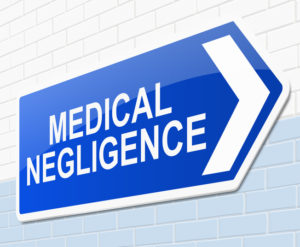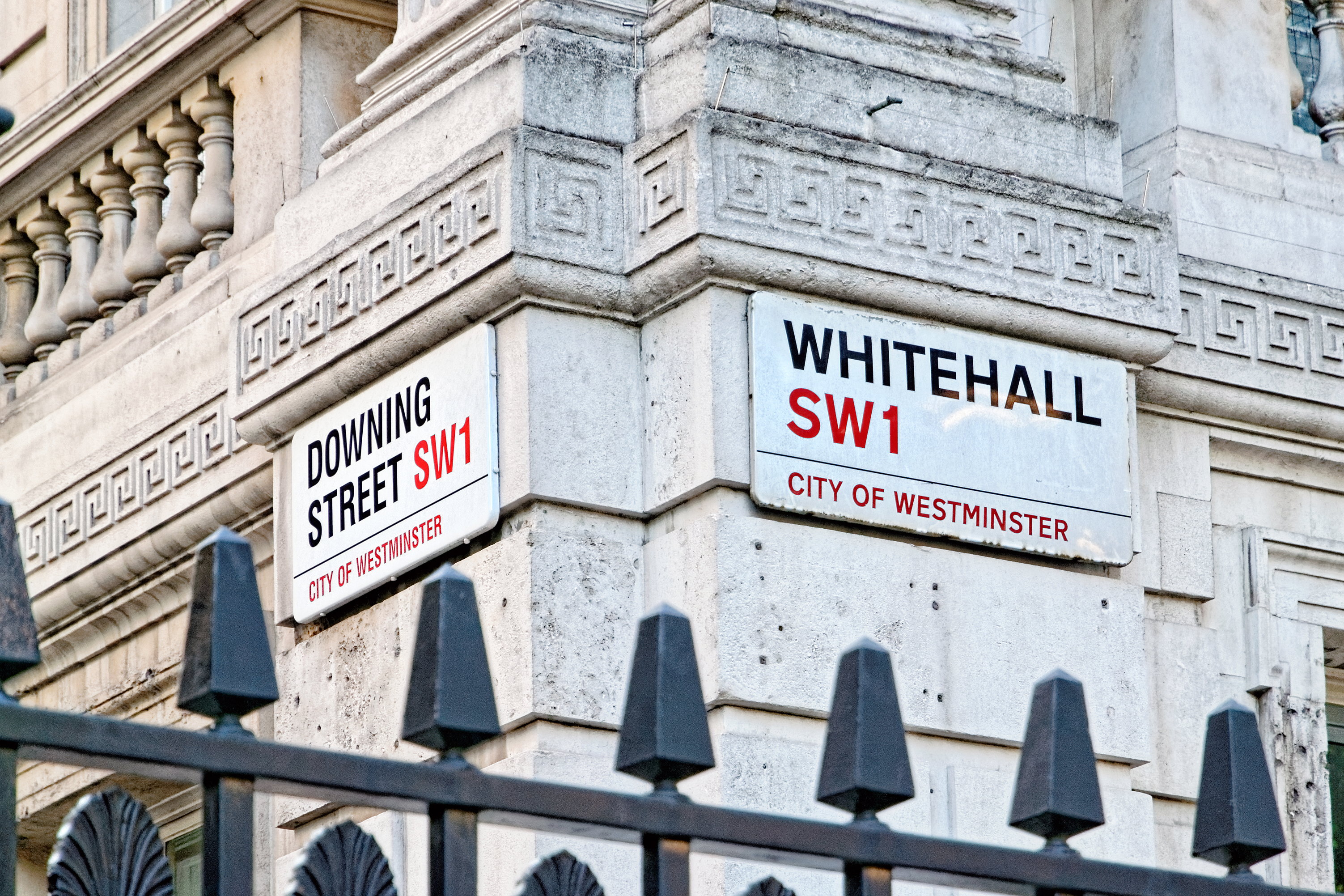What is medical negligence in the NHS?
Medical negligence (or clinical negligence) is the failure to provide adequate medical treatment, contributing to the deterioration of a patient’s condition. Negligenceor medical malpractice may be committed by physicians, nurses, therapists or administrative staff.
Common examples of NHS medical negligence include misdiagnosis, medical accidents, errors during procedures or operations, incorrect or inappropriate prescriptions, treatment without formal consent, injury, and inadequate warning of risks involved with a particular medical treatment.
Compensation can only be claimed, however, if it can be proved that the treatment was carried out negligently and resulted in harm.
With 1 million people said to use NHS services every day, the potential for something untoward to occur during medical care is substantial.


A 2011 report by the Health Foundation suggested that primary care (which accounts for over 90% of healthcare appointments) might lead to between 1-2% of patients experiencing adverse effects.
It was suggested that the rate of adverse effects may be as high as 10% in hospital (hospital negligence), and that prescribing error rates may be as high as 11%.
What are the costs of medical negligence claims
The legal industry in terms of the ‘clinical negligence solicitor’ is now well developed.
Any basic search on google will swarm with swathes of solicitors firms offering legal advice and soliciting to take on your medical negligence compensation claim.
In 2021/2022 the total cost of clinical negligence cases to the NHS was some £2.5 Billion, of which £1.7 billion was paid out in compensation, and close to £0.6 billion was accounted for by legal fees. 16,484 clinical and non-clinical claims were resolved in 2021/22 compared with 15,712 in 2020/21.
Tota NHS compensation payouts equated to around 2% of the total budget of the NHS, and this has been projected to rise to as much as 4% in the coming years.
In 2018/19, NHS Resolution, the body that deals with an NHS medical negligence claim on behalf of the National Health Service, reported there were 10,678 new claims that year. The largest areas for claims were: emergency medicine (13%), orthopaedic surgery (12%), obstetrics (10%), general surgery (9%), and gynaecology (5%).
According to the Medical Protection Society, the annual costs to the NHS of settling clinical negligence claims in 2017 was the equivalent to training around 6,500 doctors.
Even these figures do not tell the full story. The Annual Accounts of NHS Resolution, contain provisions in terms of the amounts set aside for the potential claim body that is likely to arise in the future.
At a staggering £128.6 billion in 2022, this liability is amongst the most substantial public sector financial liabilities. It is second only to the provision made for nuclear decommissioning at around £131 billion.
Claiming for medical negligence compensation
Under the current system, a complaint of medical negligence can be made within a three year limitation period of the declared event.
There are some exceptions to this; for example, the 3-year limit doesn’t apply for children until their 18th birthday has passed. Similarly, claims relating to patients suffering from a mental disability are only subject to the 3-year period, if, or when, they recover. In both of these cases, claims can be made on behalf of the patients by a parent, relative or close acquaintance.
Legal action can also be taken by the next of kin of someone who has lost their life due to medical negligence, or when someone lacks the mental capacity to pursue a claim themselves.
In civil law, ‘negligence’ is a tort: a civil wrong that causes a claimant to suffer loss or harm, resulting in legal liability for the person responsible. The law of tort imposes a duty of care where one party could reasonably foresee that his or her conduct may cause harm to another. In most cases of medical negligence, the claimant has to prove that he or she has suffered due to the negligence of the healthcare provider.
Until 2013, legal aid was available to cover the cost of claims. Except for limited circumstances, this has since been withdrawn. This resulted in rising legal services expenses, in addition to further costs in the event of a lost case.
Some solicitor firms now offer ‘no win-no fee’ agreements, whereby no contingency fees are paid if the compensation claim is unsuccessful. To finance this, the solicitor might take out an insurance policy on the client’s behalf.
Claims that are presented to the Health Service are handled by NHS Resolution. Formerly known as the NHS Litigation Authority, NHS Resolution is an arm’s length advisory body of the Department of Health and Social Care. It administers compensation claims on behalf of the NHS while overseeing concerns raised with regard to the performance of a medical professional.
Working to support the National Health Service from within, NHS Resolution educates care providers with the wider aim of promoting safe medical activity. In 2016, the body established a claims mediation panel, which aimed to unite patients and medical staff, to resolve disputes without litigation.
Concerns with the current system?
There are a number of concerns with the current system governing medical negligence in the UK.
One of these revolves around the time involved. Even a straightforward case around negligent treatment takes between 18 and 24 months to be settled, and this can easily extend to 3 or 4 years if the matter progresses to court.
Moreover, it is pointed out how the increasing costs of handling personal injury style claims is diverting money from core medical facilities, posing further strains on the national healthcare services and, ironically, hindering the quality of service.
It is pointed out that every pound spent on paying out for a successful claim is money that cannot be spent on care. At the same time, it is argued that the high and time consuming cost of medical compensation claims encourage clinicians to practice ‘defensive medicine’ and avoid high-risk procedures.
The current system for handling medical negligence claims has also come under strong criticism for the legal costs involved. A National Audit Office review found that for the majority of claims under £45,000, the associated legal and administrative costs in fact exceeded the final damages awarded.
Those looking to reform the system have stressed how early-stage resolution has countless advantages over litigation. It is claimed that a no-blame NHS compensation system could generate a faster complaints-response system. It would likewise lessen unnecessary costs, foster open discussion, and shorten the process for both clinicians and patient alike.
Clearly the most effective means of reducing claims is to prevent the faults from occurring in the first place. However, once an incident has occurred, critics argue that the complaints system must be used as a tool for embedding long-term and sustainable improvements to the system.
In 2022, a record 77% of claims were resolved in 2021/22 without court proceedings, a fact that lead to a reduction in legal costs in 2021/2022.
History of the UK medical negligence system
Early Years
The evolution of the legal concept of medical negligence is a surprisingly recent development. The tort of negligence itself was only founded in the UK with the case of Donoghue v Stevenson 1932, when commercial liability for defective produce was established.
The key precedent in the establishment of medical negligence was provided by the Bolam proceedings of 1950. This case provided the so-called ‘Bolam test’, which has underpinned the UK’s arrangements for more than half a century. The test provides a defence for medical professionals when they have “acted in accordance with practice accepted as proper by a responsible body of medical opinion”.
In practice, this made winning a negligence claim very difficult. The Bolam test was amended by a judgement in the late 1990s to permit a judge to conclude that a medical decision that is not capable of withstanding logical analysis is unreasonable and the medical treatment negligent.
NHS Litigation Authority
To deal with clinical negligence in the NHS, the Government created a centrally funded pool of resources to meet the costs of any claims brought against the NHS. Faced with the rise of specialist medical negligence solicitor, the NHS Litigation Authority (NHSLA) was set up in 1995 to contest lawsuits on behalf of the Secretary of State.

Recognising the growing costs imposed by clinical negligence claims the Department of Health conducted a further review of arrangements in 2003. A consultation paper, ‘Making Amends – Clinical Negligence Reform’, was published in July that year.
In 2006 the NHS Redress Act introduced a new redress scheme for a NHS claim that was lower in value, and updated the powers and authority of the NHS Litigation Authority. The Authority changed its name to NHS Resolution in 2017.
Medical negligence and coronavirus 2020-21
In response to the outbreak of COVID-19, in 2020 NHS Resolution launched a supplementary scheme to better address liabilities arising as a result of the pandemic.
Adapting to unprecedented medical conditions and demand, the scheme was designed to provide additional indemnity coverage for NHS negligence compensation arising from work carried out by the coronavirus response team. The scheme also supported the work of independent organisations and local authorities participating in community testing and vaccination procedures.
There were concerns that the developing pandemic would provoke a surge in claims of medical negligence, fueling fear among the medical profession . In 2020, Doctors leaders wrote to then Health Secretary Matt Hancock calling on new emergency laws to better protect them from inappropriate legal action; for instance, if they were forced with assigning a single available ventilator to one of three suffering patients.
In April of 2020, the government also introduced a £60 000 ‘death in service’ scheme. This pledged that families of frontline NHS and social care staff who lost their lives to COVID-19 would be entitled a payment of £60,000. However, the announcement was accompanied by the legal disclaimer that the government accepts no liability for the death.
Quotes
“We have seen a more collaborative approach to investigating claims for compensation across the legal market. Litigation has reduced for the fourth year running and mediation is now seen as mainstream. The pandemic has placed enormous pressure on our colleagues across the NHS and it has been encouraging to see remote mediations taking place so that cases can continue to be resolved without added stress to patients and those who care for them.” – Helen Vernon, Chief Executive of NHS Resolution, 2020
Statistics
The provision for the liabilities arising from claims for all financial years covered by all NHS Resolution schemes has increased by £0.7 billion from £83.4 billion to £84.1 billion.
The cost of settling claims in 2019/20 reduced by £103 million, to £2.3 billion on longstanding schemes. A further £61.4 million was spent on general practice claims.
Of the 15,550 claims resolved in 2019/20, 71.5% were resolved without court proceedings, 27.9% with proceedings and 0.6% at trial.
Maternity claims remain the highest value area, representing 50% of the total value of all clinical negligence claims received and 69% of the incurred cost of harm.
[Source – NHS Resolution’s Annual report and accounts 2019/20]










